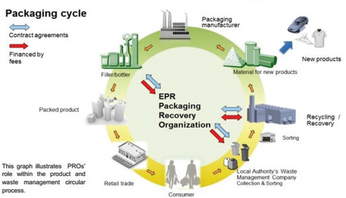Printed/Flexible Electronics
New Era of Web Tension PROFILE Monitoring for Roll-To-Roll Processes Paid Members Public
Presented by Giovanni Grassi, FMS Force Measruing Systems AG Measurement of tension in web materials is well known since decades. The development focus during this time was mainly set to precision of the loadcells and amplifiers with higher resolution, shorter cycle times and communication interfaces. State of the art is
The Role of Anilox and Gravure Quality Control in R2R Printing & Coating Efficiency Paid Members Public
Presented by Brent Zurcher, MicroDynamics Anilox and gravure cylinders used in R2R processes perform the vital function of precision fluid transfer to the substrate, and therefore have a significant impact on the final function and quality of the end product. However, many R2R converters have no ability to inspect these
Practical Applications of AI and GenAI in Supply Chain Planning for paper converters Paid Members Public
Presented by Peter Dobell, OMP In this presentation OMP will share its experience and thoughts on where AI and GenAI is best utilized in supply chain planning. We will cover examples in demand planning, S&OP, rough cut capacity planning, scheduling and shop floor data collection.
No promoters for Immediate Ink Adhesion on Poly Films thanks to NH Flame Treatment Process Paid Members Public
Presented by Stefano Mancinelli, esseCI srl This presentation is focused on sharing main NH-FT Technology features, an upgraded surface flame treatment process, producing on polyolefin (PP, PE) and PET substrates, among the others, such high surface energy, to allow these materials printing (Flexo, Gravure, UV), without the need to use
Low-Temperature and Rapid-Cure Liquid Polyimide for Roll-to-Roll Coating Applications Paid Members Public
Presented by John Park, HD MicroSystems In roll-to-roll (R2R) manufacturing, polyimide is commonly used in film form, with DuPont's Kapton® being a prime example due to its excellent mechanical, thermal, and electrical properties, making it suitable for various industries. HD MicroSystems is a leading supplier of polyimide precursors,
Key Factors in Selecting a Suitable Web Cleaning system Paid Members Public
Presented by Matt Fyffe, Meech International A clean, contaminant free web is becoming more and more critical in the competitive printing, coating, laminating and converting industries. The purpose of this presentation is to look at the various types of web cleaning systems that are available today. We will be looking
Goals, Objectives, and Best Practices for Drying and Curing Paid Members Public
Presented by John Palazzolo, Adphos In all types of printing and coating there are many Goals and Objectives as well as Factors and Considerations in drying and curing of soft/hard solvent and water-based inks, coatings, and adhesives. This presentation will detail several of the goal and objectives including ROI,
Development of Roll-to-Roll (R2R) Continuous Manufacturing System for Digital Patterning Lithography Process Paid Members Public
Presented by Jaeyoung Kim, Korea Institute of Machinery and Materials (KIMM) This paper introduces the development of a maskless roll-to-roll (R2R) digital exposure process for continuous manufacturing systems. Applying digital exposure technology to the R2R system facilitates high-quality and large-scale production and proposes solutions to various emerging challenges. Notably, a

